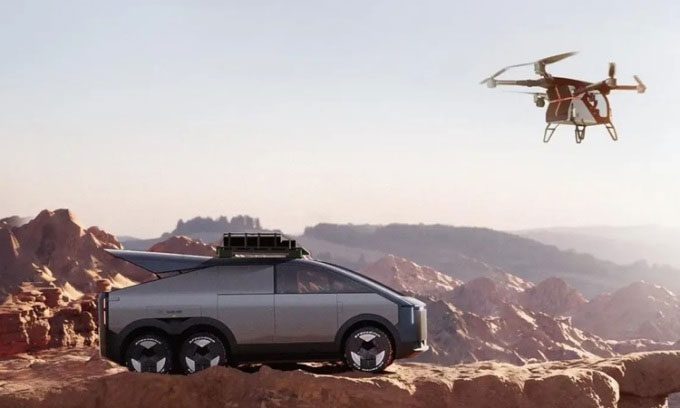The truck model consists of two modules that can be separated or combined to provide a flexible mobility experience for users.
Chinese company Xpeng AeroHT unveiled its modular flying truck named “Land Aircraft Carrier” at Xpeng Technology Day 2023, as reported by Interesting Engineering on October 31. This model features a two-part design that can seamlessly transition between ground and aerial modes.

The aerial and ground modules of the Land Aircraft Carrier flying truck. (Photo: Xpeng AeroHT).
The aerial module allows the vehicle to take off vertically to fly at low altitudes, while the ground module enables the truck to move on land. Xpeng AeroHT stated that besides personal use, the truck has potential applications in public services such as emergency rescue, catering to diverse needs. In addition to the flying truck, Xpeng AeroHT also showcased a design for an electric flying supercar capable of vertical takeoff and landing, featuring a fully concealed frame.
The ground module of the flying truck boasts an advanced design with sharp lines and a smooth surface reminiscent of a lunar exploration vehicle. Xpeng AeroHT shared that the final design can be refined according to various requirements and limitations. The ground module is capable of carrying 4 to 5 passengers and is equipped with a hybrid electric system that offers an extensive range. The vehicle features a three-axle, six-wheel structure that allows for all-wheel drive and rear-wheel steering.
The aerial module is an electric aircraft equipped with a distributed electric propulsion system, featuring both manual and autonomous driving modes. The cockpit, which accommodates two people, offers a panoramic view of 270 degrees. The company noted that the automated system coordinates the separation and combination process of the two modules, enhancing the mobility experience for users from ground to air.
According to Xpeng AeroHT, the flight control system can adjust algorithms within milliseconds if a rotor malfunctions, ensuring the vehicle continues to operate safely. Coupled with this capability is a thrust-to-weight ratio greater than 2, allowing the vehicle to continue flying safely even if 2 out of 6 rotors fail, meeting the criteria for civil aviation. Additionally, the company’s new multi-parachute rescue system was successfully tested at an altitude of 50 meters in October. This device can withstand a maximum load of one ton and deploys parachutes at 50 meters, ensuring safer landings at a speed of 5 meters per second.




















































